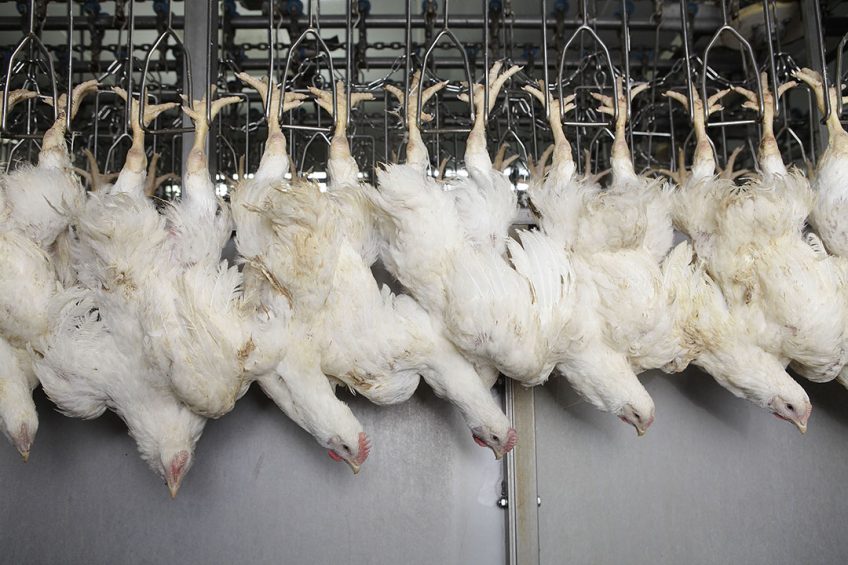EFSA – hazard identification and ranking for poultry

The European Food Safety Authority (EFSA) has produced a hazard identification and ranking for poultry at slaughter following discussions with EU Member States representatives.
EFSA asked National Contact Points (NCP) at their meeting last month to rank hazards during various phases of the slaughter process, including arrival, unloading, lairage, handling and moving of the animals, restraint, stunning and bleeding.
During each phase, the animals are exposed to hazards and run a risk of reduced welfare, and the questionnaire wanted respondents to indicate all hazards present in the slaughter line according to their knowledge and/or practical experience.
A discussion was then held in order to agree on terminology for the common understanding of the hazards and NCP’s then voted for hazards that were present in their countries.
Arrival
The most common hazards for the arrival phases were prolonged waiting to unloading, poor environmental temperatures and overstocking of birds. Other hazards raised included poor humidity, due to inadequate ventilation or unsatisfactory air quality, lack of water or food or in cold weather low stocking density.
During the unloading phase, the most common hazard seen was rough handling leading to fear and injury among the birds, followed by contained tilting resulting in birds bunching and noise.
Hazards associated with the lairage were generally linked to environmental issues, such as poor temperature, air movement, ventilation or humidity, although other concerns included poor lairage design, absence of blue light, slippery floor, escaped birds and prolonged waiting time to slaughter.
Handling and moving of animals
Rough or inappropriate handling during removal from crates was five times the largest hazard when handling or moving birds, according to the NCP representatives, with tipping or dumping of birds on conveyors and lack of any contingency plan mentioned at a much lower level of concern.
However, there were equal levels of concern when restraint of birds was discussed with 20 Member State representatives stressing their worries about improper shackling of birds, which could result in compression of the legs.
During the stunning phase, 13 Member States officials highlighted the problem of insufficient stunning due to different sizes of animals being processed. This was followed by lack or poor calibration of monitors during either gas, electrical or water bath stunning and low voltage issues.
Finally, in the bleeding section, poor neck cutting practices were seen as the largest issue, followed by cutting conscious birds, prolong stun-to-neck cutting interval, live birds entering the scaled tank and recovery of consciousness after neck cutting.
The study, EFSA, says, provides indication of the hazards that are most common in EU Member States and most urgent to be addressed in order to safeguard animal welfare during the slaughter process.












